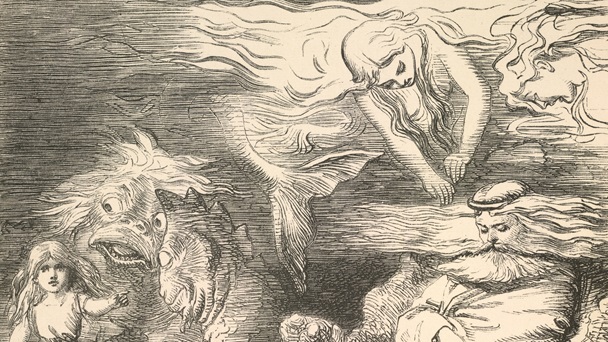The Mysteries Of Blood: Folklore, Legends, And Superstitions

Blood has long captured the fascination and intrigue of human beings. Throughout history, blood has been associated with mystical and spiritual significance, as well as being the subject of legends, folklore, and superstitions.
From ancient times to modern medicine, there is an undeniable mystery surrounding the nature of blood and its various cultural and scientific implications. This article delves into the many facets of the mysteries of blood, examining its role in religion, art, literature, and cultural taboos.
We explore the ancient beliefs and practices surrounding blood, as well as the scientific understanding of its properties and functions. Additionally, we examine the darker side of blood in history and culture, including its association with violence, death, and disease.
By examining the many cultural and scientific aspects of blood, we gain a deeper understanding of its enduring significance and the many mysteries that continue to surround it.
Key Takeaways
- Blood has been a subject of fascination and mystery throughout history, with both mystical and cultural significance.
- Blood has been used for both good and evil purposes in ancient societies, including blood sacrifice and religious rituals.
- Blood has enduring power in human imagination and tradition, with symbolic meanings related to life and death, purity and pollution, power and sacrifice, and more.
- Modern medicine utilizes blood in various ways, including blood transfusions, blood tests, and stem cell research, while hematology has helped unravel the mysteries of this life-sustaining substance.
Ancient Beliefs and Practices Surrounding Blood
Historical accounts reveal that ancient societies held deep-seated beliefs and practices surrounding blood, which often involved rituals, sacrifices, and healing ceremonies.
Blood was regarded as a powerful substance that could be used for both good and evil purposes. In many cultures, blood was seen as the life force that sustained human beings and animals alike. For this reason, blood was often used in religious rituals as a way of appeasing the gods and ensuring a bountiful harvest.
In some ancient societies, blood sacrifice was seen as a way of purifying the community and warding off evil spirits. For example, the Aztecs believed that human sacrifice was necessary to keep the sun moving across the sky. The Mayans also practiced blood sacrifice, offering the hearts of their enemies to the gods.
In ancient Egypt, blood was used in mummification rituals to preserve the body for the afterlife. These practices demonstrate the deep reverence and fear that many ancient societies had for blood, and how it was seen as a powerful force that could be harnessed for both spiritual and practical purposes.
Blood in Religion and Spirituality
Across various religious and spiritual traditions, blood has been imbued with symbolic meaning and significance.
In Christianity, the blood of Jesus is seen as a symbol of sacrifice and redemption, representing his willingness to die for the sins of humanity.
In Judaism, blood is seen as a symbol of life force, and is used in the ritual of circumcision as a sign of the covenant between God and his people.
In Hinduism, blood sacrifice is used as a means of appeasing the gods and achieving spiritual enlightenment.
In some spiritual practices, blood is seen as a source of power and vitality.
In African spiritual traditions, blood is used in rituals to communicate with ancestors and spirits, as well as to strengthen the connection between the living and the dead.
In modern-day Wicca and other forms of witchcraft, blood is seen as a powerful tool for spellcasting and ritual work, with practitioners using their own blood as a means of tapping into their inner power and connecting with the divine.
Despite the variety of beliefs and practices surrounding blood in religion and spirituality, one thing remains clear: the power and significance of this vital bodily fluid has captured the imaginations of people across the world for centuries.
The Symbolism of Blood in Literature and Art
Throughout literature and art, the symbolism of blood has been used to represent a range of themes and emotions, from violence and death to passion and vitality.
In Shakespeare’s tragedy Macbeth, blood imagery is used to represent guilt and remorse. Lady Macbeth’s obsessive guilt over the murder of King Duncan results in her hallucinating blood on her hands, which she cannot wash off.
Similarly, in Nathaniel Hawthorne’s The Scarlet Letter, the protagonist Hester Prynne’s scarlet letter symbolizes her sin and shame, as well as the passion and vitality that she brings to her life.
In art, the use of blood as a symbol has been prevalent throughout history. In religious paintings, blood is often used to represent the sacrifice of Jesus Christ and the redemption of humanity. In more contemporary art, artists such as Damien Hirst have used blood as a medium in their work, creating provocative pieces that challenge the viewer’s perception of art and its boundaries.
The symbolism of blood in literature and art has been used to convey a range of emotions and themes, making it a powerful and enduring symbol in human culture.
The Role of Blood in Healing and Medicine
The significance of blood in medicine and healing can be traced back to ancient civilizations, where bloodletting was a common practice in the belief that it could balance the body’s humors and treat various illnesses. The use of blood in medicine has evolved over time, with modern medicine utilizing blood in a variety of ways, including blood transfusions, blood tests, and stem cell research.
Here are some ways in which blood plays a crucial role in modern medicine:
- Blood transfusions: Blood transfusions are used to replace blood lost due to injury or surgery, to treat anemia, and to treat conditions such as sickle cell disease. Blood donors are screened for infectious diseases and other factors to ensure the safety of the blood supply.
- Blood tests: Blood tests are used to diagnose and monitor a variety of medical conditions, including infections, anemia, and cancer. Blood tests can also provide information about a patient’s liver and kidney function, blood sugar levels, and cholesterol levels.
- Stem cell research: Stem cells are found in blood and bone marrow and have the potential to develop into different types of cells. Stem cell research holds promise for treating a variety of diseases, including leukemia and other blood disorders, as well as heart disease and diabetes.
Blood as a Cultural Taboo
In many cultures, the sight of blood is considered a taboo subject that is associated with impurity, danger, and even death. The reasons for this vary from culture to culture, but some common themes include the belief that blood is a powerful force that can bring harm or misfortune, the idea that blood is a sacred substance that should not be spilt or contaminated, and the fear of bloodborne diseases.
In some cultures, blood is considered so taboo that it is never spoken of or even referred to indirectly. For example, in traditional Jewish and Muslim societies, menstruating women are considered impure and are forbidden from touching certain objects or engaging in certain activities. Similarly, in some African cultures, the sight of blood is associated with witchcraft and is believed to have the power to cause illness, death, or other forms of harm.
Despite these cultural taboos, blood continues to play an important role in medicine, healing, and scientific research.
Blood in Folklore and Mythology
Across cultures and time periods, myths and stories have been created to explain the mysteries of life, death, and the human experience, and blood often features prominently in these tales.
In many cultures, blood is seen as a powerful force that can either heal or harm, and it is often associated with life, death, and sacrifice.
For example, in ancient Greek mythology, the god Zeus punished the titan Prometheus by chaining him to a rock and having his liver eaten by an eagle every day. This punishment was never-ending because the liver would regenerate overnight, symbolizing the regenerative powers of blood.
Similarly, blood is also a central theme in many African and Native American stories.
For instance, in the African folklore of the Yoruba people, the goddess Oshun is believed to have created the first human beings by mixing clay with her own menstrual blood. This belief highlights the importance of blood in the creation of life and fertility.
In Native American mythology, blood is often associated with the spirits of ancestors and is used in rituals to honor and communicate with them.
These stories and beliefs demonstrate the powerful symbolism and cultural significance of blood in folklore and mythology.
The Science of Blood and Its Mysteries
Throughout history, humans have been fascinated by the properties and functions of this vital bodily fluid, leading to scientific discoveries and advancements in medical practices. The study of blood, hematology, has helped to unravel the mysteries of this life-sustaining substance.
Here are some of the fascinating scientific findings about blood:
- Blood is composed of various components, including red blood cells, white blood cells, and platelets, each with unique functions in the body.
- The color of blood varies depending on the level of oxygen it carries, with oxygen-rich blood appearing bright red and oxygen-poor blood appearing dark red.
- Blood is responsible for transporting nutrients, oxygen, and waste products throughout the body, as well as regulating body temperature and pH levels.
- Blood type is determined by the presence or absence of specific antigens on the surface of red blood cells, with four main blood types recognized: A, B, AB, and O.
- Blood disorders, such as anemia, hemophilia, and leukemia, can have serious consequences and require medical intervention.
The study of blood has come a long way from the superstitions and folklore of ancient times. Today, advances in technology and medical practices continue to deepen our understanding of this vital bodily fluid.
Exploring the Darker Side of Blood in History and Culture
The historical and cultural significance of blood reveals a complex and often darker side of human beliefs and practices.
For centuries, blood has been associated with life and death, power and sacrifice, purity and pollution, and a myriad of other symbolic meanings.
In many cultures, blood has been revered as a sacred substance that connects humans to the divine, while in others, it has been feared as a source of evil or contagion.
Blood has also been used as a tool of oppression and violence, as seen in the rituals of human sacrifice, bloodletting, and blood libel.
The mysteries of blood have given rise to a rich folklore, legends, and superstitions that continue to fascinate and terrify people.
Many of these beliefs are based on erroneous assumptions about the properties and functions of blood, such as its supposed ability to carry diseases, transmit traits, or reveal character.
Others are rooted in cultural taboos and prejudices, such as the association of menstruation or circumcision with impurity or inferiority.
Despite the advances in scientific knowledge about blood, many of these myths and practices persist in various forms and contexts, reflecting the enduring power of human imagination and tradition.
Conclusion
In conclusion, the mysteries surrounding blood have captivated human imagination for centuries. From ancient beliefs and practices to religion, spirituality, literature, and art, blood has played a significant role in human culture and society.
Blood has been used for healing and medicine, but it has also been a cultural taboo in some societies. The symbolism of blood has been explored in folklore, mythology, and literature, and it has revealed the darker side of human history and culture.
The science of blood has uncovered many of its mysteries, but there is still much to be discovered. The study of blood has led to significant advances in medicine, and it continues to be a critical area of research.
However, the cultural and symbolic significance of blood cannot be ignored. The way blood has been perceived and treated in different societies throughout history is a reflection of human beliefs, values, and attitudes.
The mysteries of blood will continue to fascinate and intrigue us, and they will undoubtedly inspire new discoveries and insights in the future.








